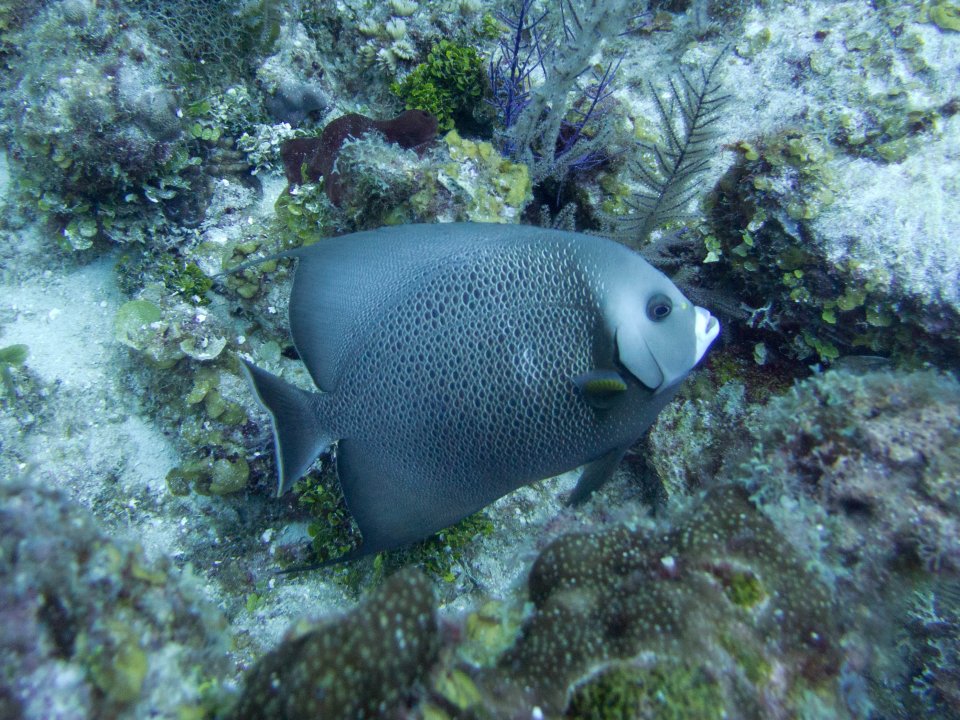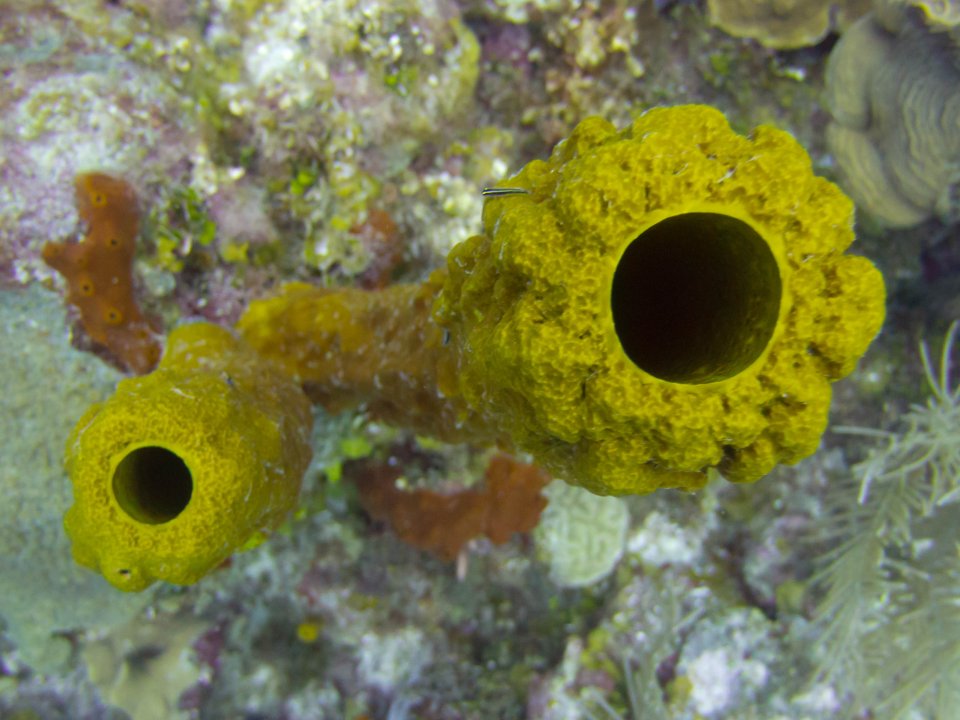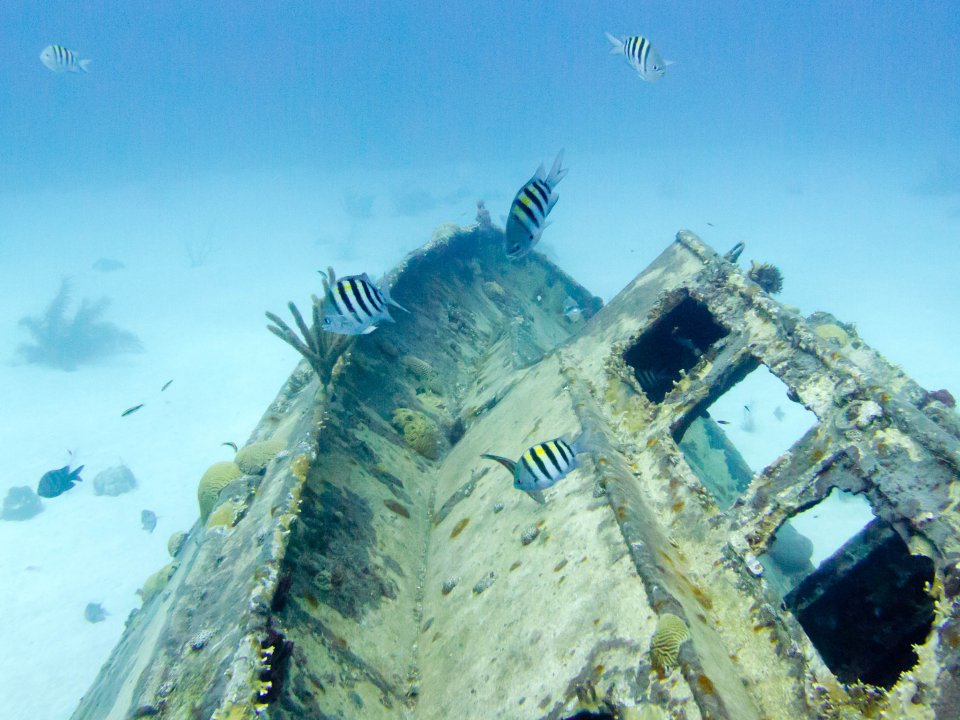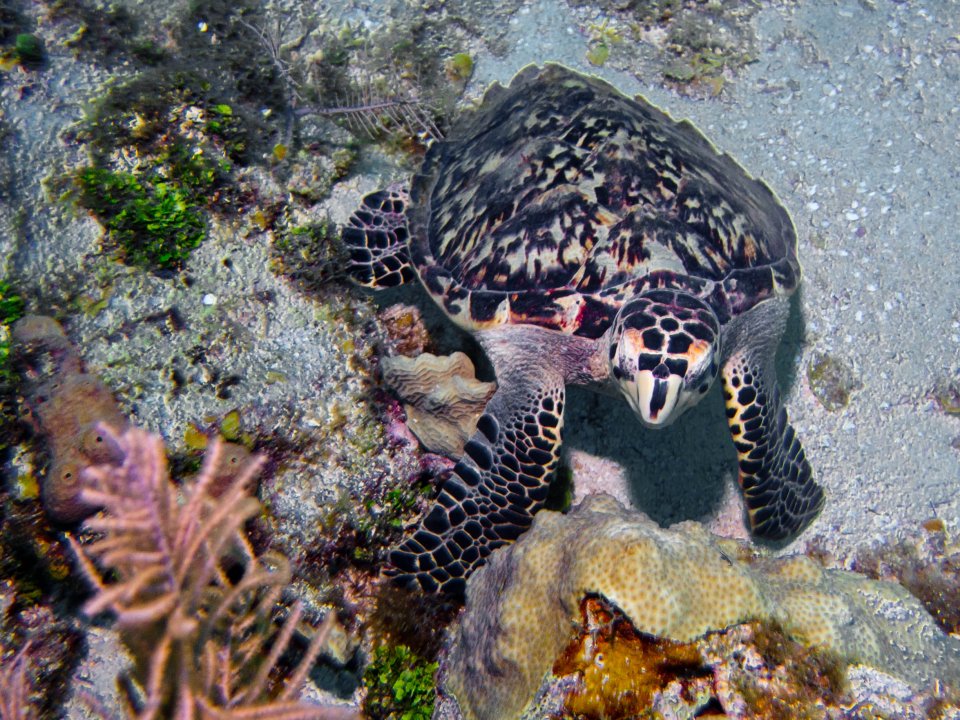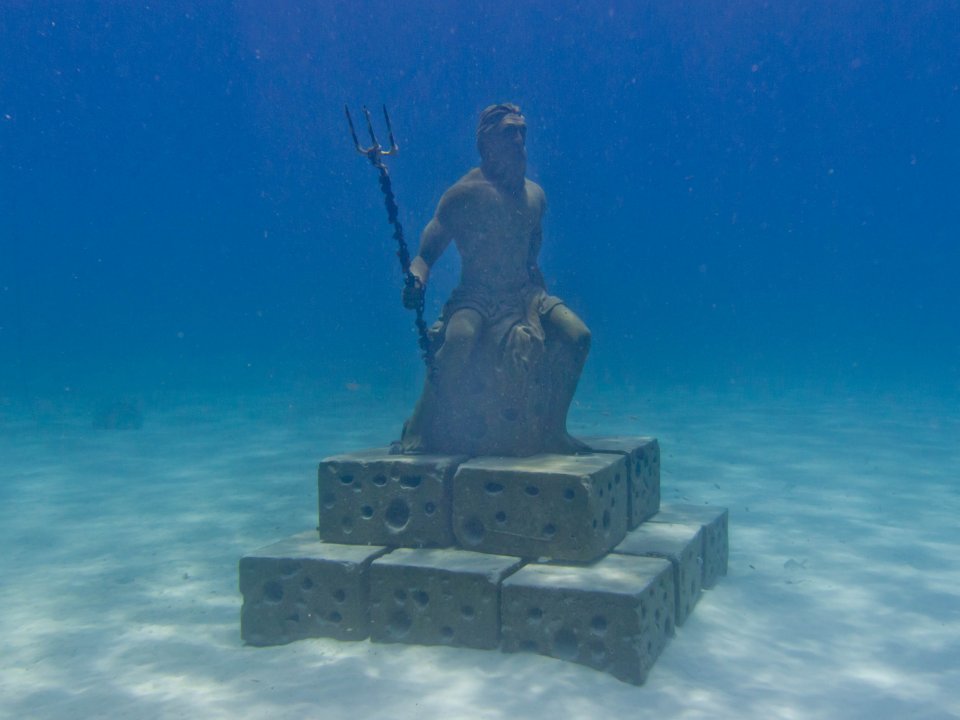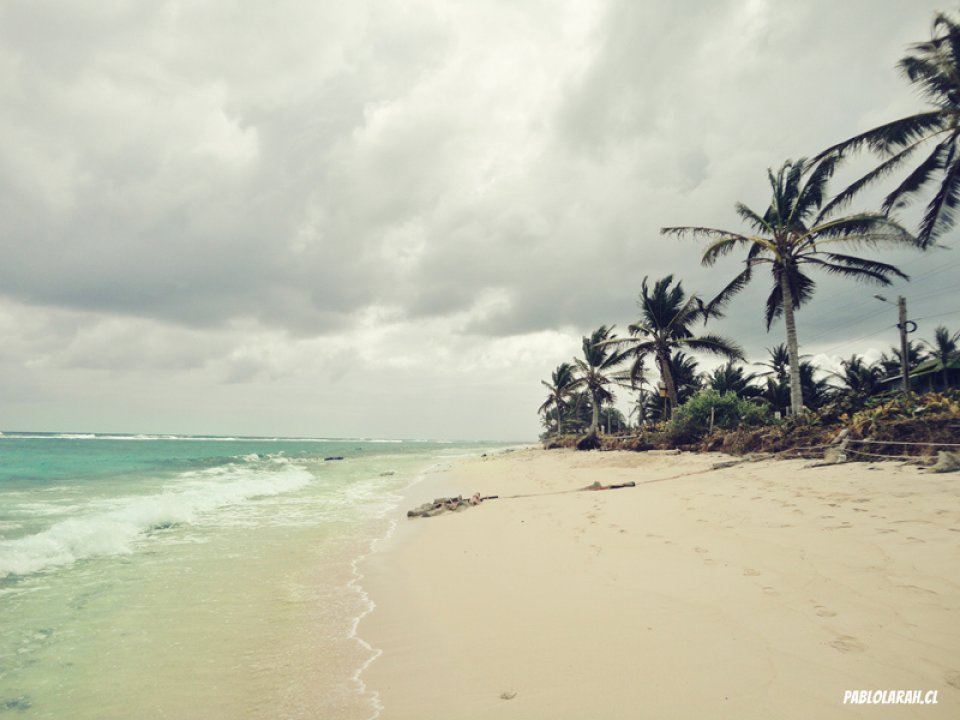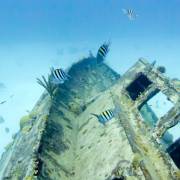Dive in San Andres and Providence islands
Diving in San Andres and Providence islands
San Andres Island, lying just 90 miles off the coast of Nicaragua, is six miles long and has a roughly shape of a “seahorse”, the coral island is relatively flat, fringed nearly everywhere with a jagged ironshore. On the north and east sides, sandy beaches attract the attention of tourists. But because the tradewinds come from the east, most diving is done on the west side of the island.
It belongs to the third largest coral reef in the world, and is considered a Biosphere Reserve by UNESCO. It also offers one of the best beaches in the Caribbean due to its sea of seven colors. Here you will be able to dive in caves, walls, cliffs and shipwrecks, and the possibility to enjoy typical reef lufe, like butterfly fish, parrot fish, snapper, grouper, in some places barracudas, and occasionally dolphins and sharks.
The most dramatic dive sites are found on the South-East side of the island. There, the reef plateau extends a few hundred yards from shore, at 6-9m (20-30ft) deep. The plateau ends abruptly with a vertical (and in places overhanging) wall, that drops hundreds of meters. Because of its exposure to the wind, currents are frequent, visibility can be reduced, and the trips to and from the dive site can be challenging.
On the North-East side there is a region of very shallow water which is protected from the onslaught of the open ocean by a barrier reef. Within the protected zone there are a wide expanse of seagrass beds and some isolated coral formations. However the majority of the diving is done on the calm West side, where the bottom profile is similar along most of the coast.
The reefs are in fantastic shape, a lot of living coral in great condition. Sites near the dropoff such as West Point and Wildlife are beautiful examples of healthy coral communities. Also in this west side there is an area called the flat Transition Zone, full with macro life: frogfishes, pipehorse, spotfin gobies, shorttail snake eels, etc.
In Providence it is popular to dive in Felipe's Place, where you can find a collection of ledges full of sea life and corals. In Turtle Rock the principal attraction is a huge rock populated by black coral. In the Spiral dive site there is a tunnel that spirals downward from 24 m (80ft) to 35m (115ft). In Tete's Place you can come across with large schools of fish and pillar coral. At Confusion site, the Corals and sponges proliferate at a depth of 18m (60fy) to 40m (130ft). In Nick's Place, you can enjoy a drop off to 40m (130ft) and you'll be able to see Creole wrasse, parrotfish, black grouper and eels. In the other hand,
The 3 islands can offer you amazing warm water the whole year, great visibility and a stunning display of sea life, and there is dive sites for all levels, just check with your dive center which places you can go according to your experience.
Throughout the year you can enjoy good weather in San Andres, with some sporadic storms. San Andres has strong winds comming from the east, therefore diving is done on the west side of the island. The wind speed changes during the year, being the strongest during the months of June and July, and September and October the most calm months. It has a rainy season between January and June. Water temperature ranges from 27ºC and 30°C, making it a perfect place to practice water sports. The best time for diving is between February and May, when there is the mating season for Green Turtles.
There is a decompression chamber at Timothy Britton Hospital in San Andres Island.
Some tips to protect these coral reefs, so that future generations of divers can enjoy this wonderful place: Please, do not step on the coral, nor break the coral. Also do not touch it with bare hands, and do not try to remove sand, as this suffocates the coral. Please do not remove any alive or dead species of the sea. And finally, please do not buy items made of shells or coral.
Travel to San Andres and Providence islands
San Andrés archipelago is composed by the islands of San Andrés, Providencia, and Santa Catalina islands, and the Rocador, Quita sueño, and Serrana Keys. Providencia and its neighboring island Santa Catalina embody the concept of quietness, far from the noisy outer world. Its mountain-filled geography and its abundant vegetation reinforce the landscape´s powerful natural charm.
This archipelago belongs to Colombia, but lays many miles to the northwest, and just 145 km off the coast of Nicaragua. San Andres looks like a typical Caribbean dive destination, but as a consequence of the bad reputation of its country, San Andres island is virtually unknown to American tourists. This gives the island a unique advantage: while other islands and reefs have felt intense pressure from the tourism industry, around San Andres all the reefs are in a very immaculate state. The island should be a great opportunity to explore waters that have hardly been explored before.
San Andres has an International Airport, so you can get a direct flight from your country to the island. You can access Providence and Santa Catalina from San Andres by boat, in an 8h journey.
You can find a wide range of accomodation in the islands, from family bungalows to bed and breakfast lodging. You can try also the liveaboard possibility.
Besides diving, some other things to do while visiting San Andres are: going to La Loma, the highest point of the island (about 120m above sea level), where you can see the most spectacular views of the Caribbean Sea. Plus for the adventurer and environmentalist there are roads, sidewalks, and also possibilities to go horseback riding, making the island a magic place. Another place to visit is San Luis, a beautiful area full of history and culture. In the past San Luis was an important port where ships full of coconuts shipped, now is a very quiet town, away from city noise with long and beautiful beaches, typical restaurants and a beautiful setting. In Mangles, visitors can see oysters, crabs, iguanas, alligators, and migratory birds, making this an ideal place for education and ecotourism. La Laguna is a haven for biodiversity of animals as the white heron, dove, palms and fruit trees. You can view a variety of small lizard that make the place a mandatory trip for lovers of nature and ecology.
In Providence you can visit El Pico, the highest point of the island from where you will see the beauty of this island in the Caribbean. La Cabeza de Morgan is a rock formation that resembles a human head. An interesting place is Cayo Cangrejo, which has been declared Biosphere Reserve, with crystalline waters and a number of species that can be found there. An intresting place to go is El Puente de los enamorados, which is located between Providence and Santa Catalina.


